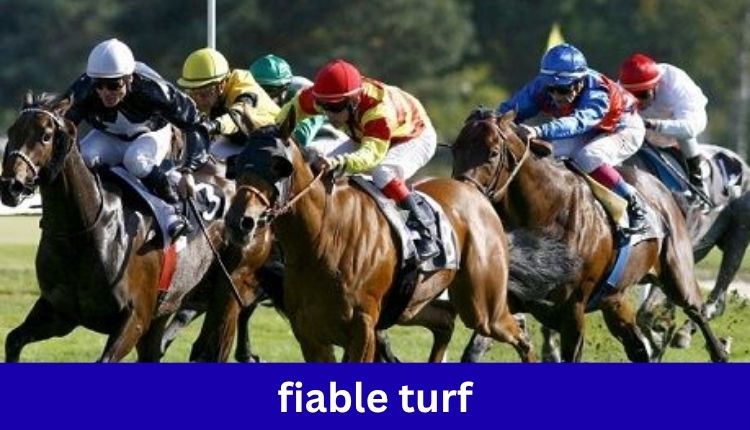Fiable turf has proven to be a key factor in determining not only horse safety but also the fairness and excitement of racing. The term “credible” refers to reliability and trustworthiness, suggesting that a well-maintained turf can consistently provide a stable racing environment. This article delves into the importance of resilient turf, its characteristics, maintenance practices, and its wider implications for the racing industry.
Understanding Fiable Turf
Fiable turf is more than just green grass on the racetrack; it is a carefully cultivated surface designed to provide horses with optimal performance conditions. The composition of this turf is carefully planned to balance softness and firmness to ensure that horses can run at maximum speed without risking injury.
Soil quality, grass type, drainage systems and mowing practices all contribute to the overall reliability of the lawn. Turf that is too hard can increase the risk of stress injuries, while turf that is too soft can slow the horse down and affect race results.
The role of Fiable Turf in horse safety
Safety is paramount in horse racing and a reliable Fiable turf is crucial to reducing accidents. Horses exert tremendous force on the ground when galloping, and an uneven or unstable surface can lead to injuries such as tendon damage or fractures.
Supple turf provides consistent traction, cushioning and support, allowing horses to perform naturally while minimising the chance of slipping or falling. Racecourses investing in high-quality turf demonstrate a commitment to the welfare of their equine athletes and earn the trust of trainers, jockeys and spectators alike.
Maintenance procedures for Fiable Turf
Achieving and maintaining a reliable lawn requires careful maintenance. This includes regular aeration to prevent soil compaction, irrigation to maintain optimal moisture levels, and mowing to promote healthy growth.
Seasonal adjustments are also decisive; for example, in the colder months, the lawn may require a protective treatment to prevent freezing, while in the hot seasons, hydration and shading techniques will ensure that the grass does not dry out. Fiable turf managers monitor conditions daily, adjusting to weather and race schedules to ensure the surface remains supple at all times.
Effect on racing performance
Fiable turf quality directly affects plant performance. Horses running on a well-maintained, flexible surface can achieve faster times and maintain stamina throughout the race. Trainers often assess how horses perform on different types of turf before major races and adjust training methods accordingly.
Jockeys also rely on consistent turf conditions for strategic pacing, turns and positioning during a race. A reliable track ensures that race results are determined by skill and athleticism rather than unpredictable surface conditions.
Economic Implications of Fiable Turf
Fiable turf has significant economic implications for racetracks and the wider racing industry. Tracks that consistently provide reliable surfaces attract higher attendances, more betting activity and prestigious events.
Owners and trainers prefer venues where turf reduces the risk of injury and increases performance, thereby increasing the overall competitiveness and profitability of racing. In addition, investments in turf maintenance contribute to the long-term sustainability of race venues and ensure that they remain attractive and reputable over time.
Technological Advances in Turf Management
Modern racetracks are increasingly using technology to maintain decomposable turf. Sensors and automated irrigation systems monitor moisture levels and soil conditions in real time, enabling precise adjustments.
Drones and imaging technology can assess grass health and identify potential weak spots before they affect plants. These innovations not only improve reliability but also optimise the use of resources, reduce water and fertiliser consumption, and at the same time maximise the life of the lawn. The technology ensures that racetracks can consistently maintain high standards of performance and safety.
Environmental considerations
Sustainable practices are an important aspect of maintaining a pliable lawn. Organic fertilisers, organic treatments and water-saving irrigation systems help racetracks minimise their environmental impact.
In addition, a well-managed lawn can prevent soil erosion and support local biodiversity. Incorporating native grass species and maintaining natural drainage systems promotes an ecological balance while maintaining a reliable racing surface. These considerations enhance the reputation of racetracks among an environmentally conscious public and contribute to the long-term viability of horse racing.
Wrapping It Up
Fiable Turf represents a critical intersection between safety, performance and sustainability in horse racing. A reliable turf is a fundamental element of this sport, from ensuring the well-being of the horses to influencing the results of the races and economic success. As racetracks continue to embrace technological innovation and environmentally responsible practices, the concept of viable turf will remain central to the evolution of horse racing. Ensuring that racecourses maintain this high standard ultimately benefits trainers, jockeys, owners, spectators, and the industry as a whole.
Frequently Asked Questions
What does ‘fiable turf’ mean in horse racing?
Fiable turf refers to a racetrack surface that is reliable, consistent, and safe for horses to run on, minimizes the risk of injury, and ensures fair competition.
How is the lawn maintained to keep it reliable?
Maintenance includes aerating, mowing, watering, seasonal adjustments and monitoring the condition of the soil and grass to keep the surface consistent and safe.
Why is turf quality important to horse performance?
Reliable turf allows horses to run at optimal speed and maintain stamina, ensuring that race results depend on skill and athleticism rather than the unpredictability of the surface.
Can technology improve turf reliability?
Yes, sensors, automated irrigation and drone imaging help monitor conditions in real-time, enabling precise adjustments that maintain a high-quality surface.
Are there economic benefits to maintaining a pliable lawn?
It definitely attracts prestigious events, increases betting activity and reduces the risk of injury, all of which contribute to higher returns and the sustainability of racetracks.






